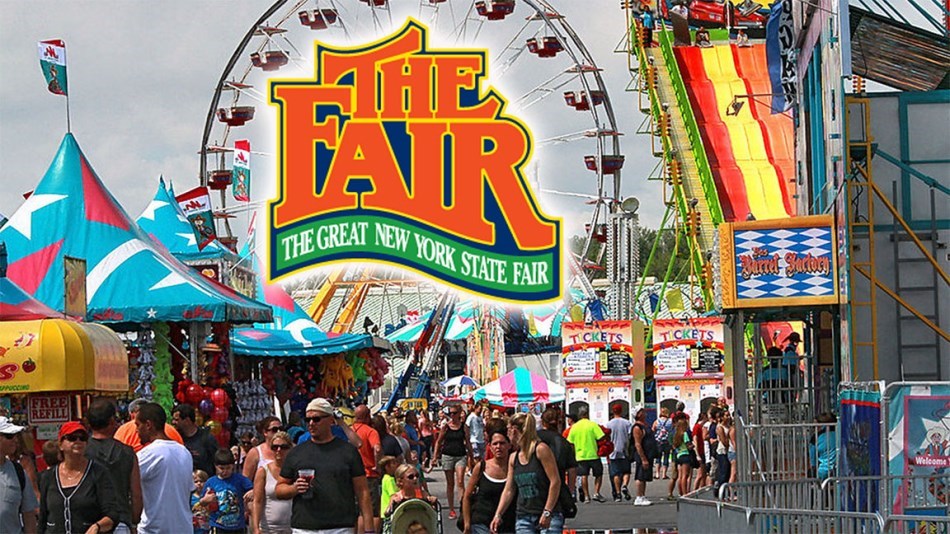.jpg)
The first fair took place in Syracuse in 1841 and took permanent residence there in 1890. It is the oldest and one of the largest state fairs in the United States, with nearly one million visitors annually.
The Great New York State Fair begins on the third or fourth Wednesday in August and runs for 13 days, ending on Labor Day.
.jpg)
It is held at the 375-acre (152 ha) Empire Expo Center on the shores of Onondaga Lake, in the town of Geddes, near the western border of Syracuse. The New York State Department of Agriculture and Markets owns five of the buildings at the fair and employs its workers.
On February 1832, The New York State Agricultural Society was founded in Albany by a group of farmers, legislators, and others to promote agricultural improvement and local fairs. The nation's first state fair was later held in Syracuse from September 29–30, 1841. Attendance was estimated at 10,000-15,000; features included speeches, animal exhibits, a plowing contest, and samples of manufactured farm and home goods. The second New York State Fair was held in Albany in 1842. Between 1842 and 1889, the fair traveled among 11 different cities: Albany, Auburn, Buffalo, Elmira, New York City, Poughkeepsie, Rochester, Saratoga Springs, Syracuse, Utica, and Watertown.
.jpg)
.jpg)
In September 1890, the Syracuse Land Company donated a 100-acre (0.40 km2) tract of land in Geddes to the Agricultural Society. Crossed by railways that facilitated exhibit transport, the Onondaga County location became the fair's permanent home. In the late 1890s, The Agricultural Society turned to state government for relief from debt due to the construction of permanent buildings on the site. The state purchased the grounds in 1899, and assumed management of the fair the next year, creating an 11-member State Fair Commission appointed by the governor.
.jpg)
According to wikipedia





![[HONORARY PROFESSOR OF RECORD FOR PRACTICE AND EMPIRICAL RESULTS – 2024] RECORD HOLDER CHU BAO QUE (BAC GIANG PROVINCE, VIETNAM)](https://uskings.us/wp-content/uploads/2024/05/IMG_0386-218x150.jpg)


